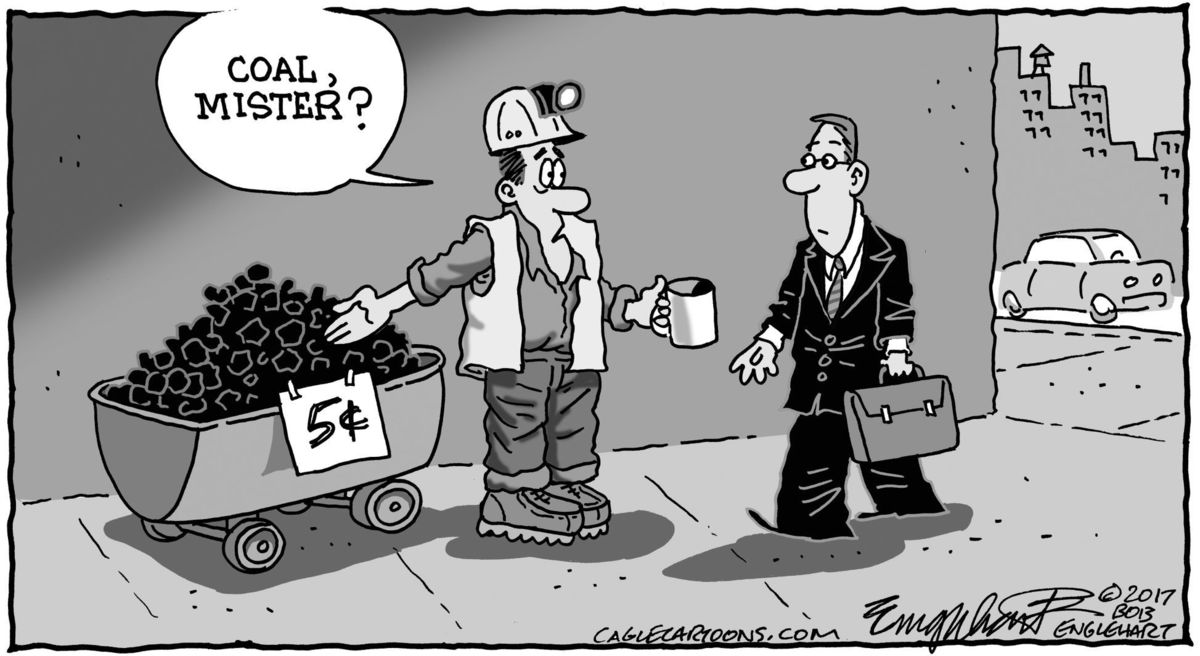America Deserves Clean Coal Tech

By Courtney Young, PhD
May 27, 2017 - At the start of his term, President Donald Trump halted new regulations on coal-fired power plants in the United States. His decision provoked plenty of criticism, with some arguing that the president had chosen to prop up a “dying industry.” Realistically, though, he has simply given coal the chance to compete in the free market — and to demonstrate whether it has the pricing and environmental profile to survive. It now appears, however, that with some smart investment, coal could actually thrive as a plentiful source of low-carbon energy.
For starters, coal may be more competitive than predicted. According to spot energy prices in April, coal per million BTU cost a full dollar less than natural gas.
This relative affordability for coal may surprise some, given the recent natural gas boom. But natural gas prices have been rising —recalling the price volatility occasionally seen over the past 20 years. This bodes well for coal’s continued use, but its growth will depend on the development of advanced technologies to rein in emissions. Because we are a nation of innovators, though, this is a promising path for coal, since advanced technologies suggest game-changing breakthroughs may be on the horizon.
New coal plants are 90 percent cleaner than 30 years ago. The modern U.S. coal fleet employs at least 15 different high-tech systems to trap sulfur, mercury, and particulate emissions. But the challenge is still to reduce or capture carbon dioxide emissions that presumably cause climate change.
This is where advanced research enters the picture, thanks to technologies like “carbon capture,” i.e., CO2 emissions are captured before they are released into the atmosphere. Some of these processes involve using CO2 to enhance oil recovery with the CO2 subsequently sequestered underground. For example, NRG Energy in Texas is using carbon dioxide from a coal-burning power plant to extract more oil and natural gas from old wells.
There are also carbon capture systems being used for industrial processes. A company in Alberta, Canada, is injecting power plant carbon dioxide emissions into concrete, a process that reduces the need for composite materials while also yielding stronger concrete.
But even without carbon capture, there are less costly and more commercially available technologies that likewise reduce CO2 emissions. New HELE (High Efficiency, Low Emissions) technologies have led to “supercritical” and “ultra-supercritical” boilers that are yielding far greater energy returns for coal plants. With thermal efficiencies as high as 49%, these advanced systems use less coal which means lower CO2 emissions.
These advanced technologies that offer both economic and environmental benefits. And they could matter greatly over the next 10 to 20 years, as advanced coal plants, including some retrofitted with carbon capture, are constructed to meet the world's growing energy needs.
The same efforts to stimulate innovation for wind and solar power should be extended to coal. Municipalities depend on an energy infrastructure that can truly “carry the load” by also supplying clean drinking water, waste treatment, high-tech medical care, and other vital needs.
Unfortunately, solar and wind still remain frustratingly low-yield and intermittent as sources of power generation; the sun doesn’t always shine and the wind doesn’t always blow. Coal remains well positioned to support affordable baseline power in the United States thanks to our world-leading coal reserves. Coal has already become the energy source of choice for developing nations like China and India. Even Japan is now expanding its coal fleet, utilizing high-efficiency, low emissions technology.
While renewables like solar and wind offer great promise as part of an industrialized nation’s energy portfolio, coal and other fossil fuels will likely remain the backbone of the global energy system for years to come. It’s more important than ever to invest in advanced technologies to improve their efficiency and environmental performance.
Courtney Young, PhD, is department head for metallurgical and materials engineering at Montana Tech in Butte.


